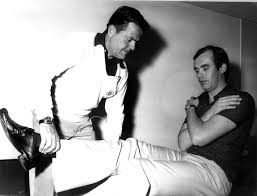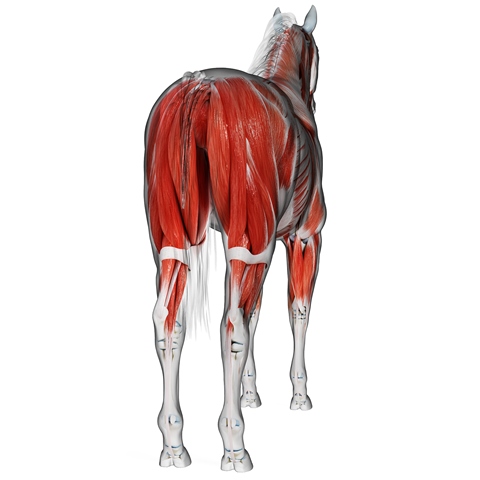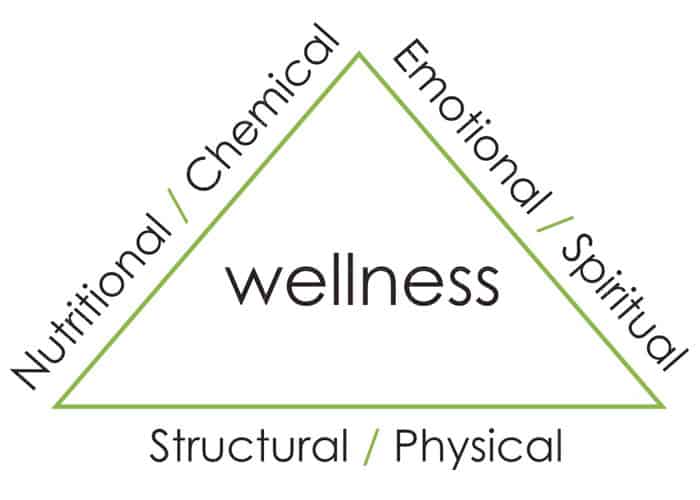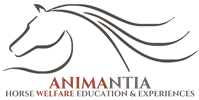Kinesiology applied to the horse
by Dora Scialfa

The evolution of applied Kinesiology: Dr. George Goodheart’s legacy and its impact on Holistic Health
Dr. George Joseph Goodheart Jr., a pioneer in chiropractic and applied kinesiology, transformed holistic health with his groundbreaking discoveries. Born in 1918, he sought to enhance patient care through innovative techniques. In the early 1960s, he explored muscle testing, drawing from physiotherapists Kendall and Kendall. He found that stimulating the origin and insertion points of an inhibited muscle—or its corresponding reflex areas—could significantly strengthen it.
Through extensive research with fellow professionals, Dr. Goodheart developed methods to reinforce weak muscles. Expanding on Dr. Frank Chapman’s 1930s work, he introduced his findings at medical conferences. To further disseminate these techniques, he authorized 12 chiropractors, including Dr. John Thie, to teach them. This led to the establishment of the International College of Applied Kinesiology, which provided specialized kinesiology training to doctors and chiropractors while advancing scientific research.
The expansion of kinesiology worldwide
By the 1970s, Dr. John Thie aimed to make kinesiology accessible beyond the medical community. In 1973, at age 40, he published “Touch for Health”, a manual translated into 23 languages. This publication gave rise to the Touch for Health Foundation, with both Goodheart and Thie on its board. In 1980, at the Lake Placid Winter Olympics, Dr. Goodheart became an Official Member of the U.S. Olympic Medical Committee, marking kinesiology’s official integration into Olympic sports medicine.
Over time, Goodheart’s students founded various kinesiology schools, each emphasizing unique aspects of the field while maintaining muscle testing as a core technique. In 1987, the International Association of Specialized Kinesiology was established to unify these diverse schools. By 1990, the International Kinesiology College was founded in Zurich to oversee educational standards and course updates. Since 2004, its headquarters has been in Queensland, Australia, ensuring continued training and accreditation for kinesiology professionals worldwide.
In Italy, Maurizio Piva introduced Touch for Health in 1988. That same year, Dr. Goodheart received the U.S. Congressional Presidential Medal, followed by the Leonardo Da Vinci Award from the Institute for the Achievement of Human Potential in 1989.
 What is applied kinesiology?
What is applied kinesiology?
Applied kinesiology is a holistic approach to diagnosing and addressing imbalances in the body. It integrates:
- Muscle Testing: A diagnostic tool to evaluate structural, emotional, and biochemical health factors.
- Meridian Energy Pathways: Based on Traditional Chinese Medicine, kinesiology connects muscles to specific organs and energy meridians.
- Reflex Stimulation: Techniques such as acupressure, homeopathy, flower remedies, and herbal medicine help restore balance.
By identifying weak muscles and their corresponding organ imbalances, practitioners can use targeted stimulation to restore the body’s natural equilibrium.
Kinesiology for animals: a revolutionary approach
Applied kinesiology extends beyond humans to animal health. The technique involves a surrogate, often the pet owner, who holds or touches the animal to assess imbalances. Once muscle testing confirms the findings, specific reflex points are stimulated to enhance the animal’s well-being.
This approach is particularly useful for:
- Dogs, Cats, and Horses: Owners can be trained to massage specific points to alleviate stress and discomfort.
- Young or Immobile Animals: Muscle testing can be performed via the owner if the animal cannot maintain certain positions.
- Holistic Veterinary Care: Kinesiology is integrated with conventional treatments for a more comprehensive healing approach.
One remarkable case involved a horse suffering from colic, pacing restlessly in its stall. Before a planned rectal exam, Dr. Goodheart performed muscle testing and massaged reflex points linked to the kidneys and intestines. Almost immediately, the horse stopped, turned its head toward the massage, and calmed down. After administering a mild pain reliever, the horse soon resumed eating and produced normal bowel movements, demonstrating the effectiveness of kinesiology techniques.
Why applied kinesiology matters
- Non-invasive & holistic: Kinesiology provides a natural healing method that respects the body’s self-regulating abilities.
- Personalized treatment: Each therapy session is tailored to the individual, considering their unique structural, emotional, and biochemical needs.
- Complementary to traditional medicine: Kinesiology enhances conventional treatments by addressing underlying imbalances.
 Kinesiology continues to evolve, integrating modern research and traditional healing techniques. The field’s growth reflects an increasing demand for natural health solutions that empower individuals to take charge of their well-being.
Kinesiology continues to evolve, integrating modern research and traditional healing techniques. The field’s growth reflects an increasing demand for natural health solutions that empower individuals to take charge of their well-being.
By combining scientific research, energy medicine, and holistic therapy, kinesiology remains a powerful tool in alternative medicine and sports performance enhancement.
For those seeking a holistic health approach for their horse, applied kinesiology offers a unique and effective solution. Whether for human or animal health, it provides personalized care that supports the body’s natural healing abilities. As kinesiology gains recognition, it continues to shape the future of wellness and integrative medicine.
______________________

Dora Scialfa
DVM, graduated in Bologna with a thesis on ethological education applied to the horse; Specialized in applied kinesiology, she followed a two-year course in kinesiology, osteopathy and craniosacral applied to the horse. Since 2006 she is a kinesiology instructor recognized by IKC. She studied homeopathy as a self-taught person, following experienced colleagues specialized in unicist homeopathy. She attended the advanced university course in “Integrations between conventional and unconventional knowledge in medicine”. She completed the three-year course of anthroposophic medicine with the thesis “On horse with the ‘Anthroposophy’.

